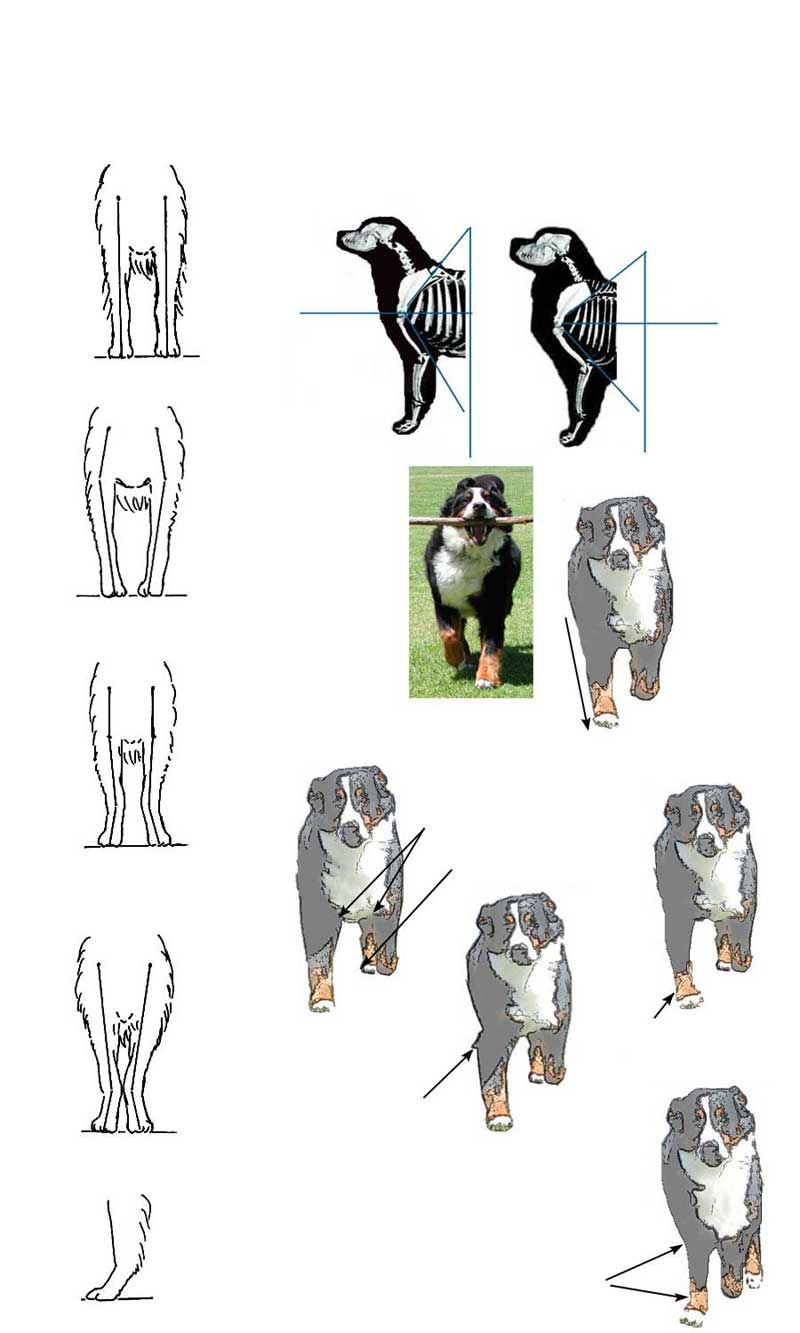
This dog has a narrow chest and is toed out. Notice the rear leg falls outside the plane of frontquarters movement. The column of support breaks at elbow and pastern.
This dog is moving wide in front. Notice the chest appears wider than the rear quarters. The rear legs and front legs are not following through in the same plane.
These two examples on the right show front and rear legs on each side following through in the same plane. At increased speed their legs tend to converge toward the center line.
Notice the column of support is a straight line. Observe the rear leg is moving in the same plane as the front leg. There is good breadth to the front and rear quarters.
This dog shows the elbows are well under the shoulder when standing. Notice the angle formed by the scapula and humerous.
This dog shows a more open angle formed by the humerous and scapula. The elbow further towards the front of the ribs. The front of the chest is flat.
Straight shoulders are often seen in Bernese. Angulation is the foundation for muscle structure. Poor shoulder angulation does not allow for substantial muscle structure which lends strength and stability to forequarters. Angulation of the forequarters influences head carriage and the manner in which the neck ties in to the back. A balanced dog will have forequarters and rearquarters angulation that work well together.
Good front showing elbows well under shoulder
Out at elbows ~ toes in
This dog is elbowing out. The column of support breaks at the elbow.
This dog is wide chested and toes in. The column of support breaks at the pastern.
Forearms inclined slightly ~ toed out
Narrow chest ~ knock knees ~ toes out
Weak pasterns ~ thin feet
The shoulders are moderately laid back, flat-lying, well-muscled and never loose. The legs are straight and strong and the elbows are well under the shoulder when the dog is standing. The pasterns slope very slightly. but are never weak. Dewclaws may he removed. The feet are round and compact with well-arched toes. Front and rear legs on each side follow through in the same plane. At increased speed, legs tend to converge toward the center line.
Forequarters